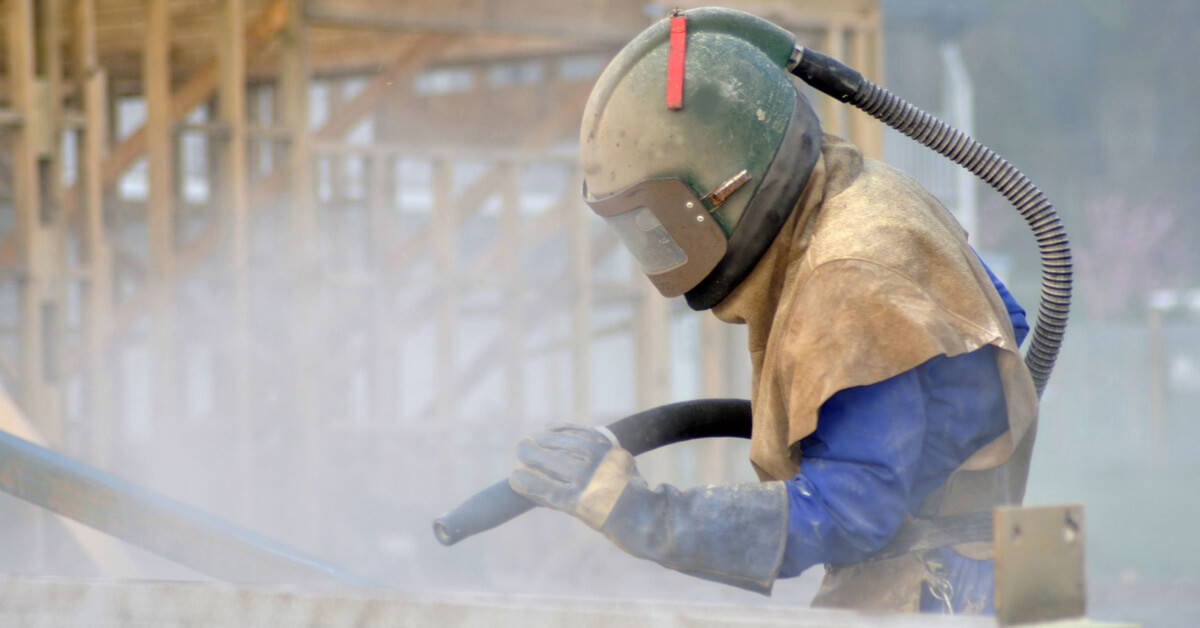
When it comes to serious surface cleaning — whether you’re stripping paint off concrete or removing years of grime from brick — not all methods are created equal. Two of the most powerful contenders in the heavy-duty cleaning game are power washing and sandblasting.
Both can tackle demanding jobs. But which one is the right tool for the surface you’re dealing with? ⚔️ Let’s break it down so you can make the best choice for your next job — or educate your customers when they ask what the difference is.
🧽 What Is Power Washing?
Power washing uses high-pressure water, sometimes heated, to blast away dirt, mildew, mold, grime, algae, and loose paint from a wide variety of surfaces.
It’s ideal for:
- Concrete driveways and sidewalks 🏡
- Siding and fences 🪵
- Decks, patios, and outdoor furniture 🪑
- Roofs (when done carefully with soft washing) 🏠
✅ Power washing is efficient, cost-effective, and environmentally friendly when used properly.
🧱 What Is Sandblasting?
Sandblasting, also called abrasive blasting, uses a high-pressure stream of sand or grit to scour surfaces. This method literally strips off the top layer of material to leave a fresh, clean surface behind.
It’s used for:
- Removing rust or paint from metal surfaces 🛠️
- Etching stone, brick, or concrete 🧱
- Industrial machinery and automotive parts
- Prepping surfaces for refinishing or repainting
⚠️ Sandblasting is extremely aggressive and must be handled carefully to avoid damage.
🔍 Side-by-Side Comparison
| Feature | Power Washing 💦 | Sandblasting 🏜️ |
|---|---|---|
| Method | High-pressure water | Abrasive material (grit/sand) |
| Surface Aggression | Moderate | Highly abrasive |
| Best For | Organic buildup, grime | Paint, rust, coatings |
| Cost | More affordable | More expensive |
| Safety Equipment Needed | Basic PPE (goggles, gloves) | Full gear (respirator, suit) |
| Cleanup | Less mess | Dust and grit everywhere |
| Surface Risk | Safe for most materials | Can etch/damage surfaces |
🏗️ When to Use Power Washing
Power washing is ideal for general cleaning, surface refreshes, and maintenance. If you’re dealing with:
- Mold and mildew
- Dirt buildup
- Dust and debris
- Greasy driveways
… then power washing is your go-to tool. It’s also great for delicate surfaces when paired with soft washing techniques (low pressure + cleaning solution). 🌿
Browse Amazon Here For Top Rated Power Washers And Accessories
🧨 When to Use Sandblasting
Sandblasting is a last resort option when power washing simply won’t cut it. Use it when:
- You need to strip away layers of paint, rust, or grime
- You’re prepping a metal or masonry surface for repainting
- There’s graffiti or industrial buildup that won’t budge
It’s also used for etched signage, brick restorations, and old buildings — but only if you’re trained and have permission. 👷
🚨 Note: Sandblasting is banned or restricted in some areas due to the airborne dust it creates. Always check local regulations before using it.
🛡️ Safety Considerations
Power washing is relatively beginner-friendly, but it still poses risks:
- High-pressure water can cause injury if misused
- Can damage wood, siding, or soft stone if pressure is too high
Sandblasting requires:
- Full protective gear (respirator, face shield, gloves)
- Controlled environment
- Ventilation and containment systems
If you’re not licensed or trained, sandblasting can quickly turn into a liability.
💵 Cost & Equipment Differences
Power washing equipment is widely available and cost-effective:
- Homeowner-grade units start around $300
- Pro units can cost $1,000–$4,000
- Easy to transport and operate
Sandblasting setups are much pricier:
- Blasters range from $1,500 to $8,000+
- Air compressors and media (grit) sold separately
- Disposal of used material is an added cost
If you’re running a local cleaning business, power washing is the safer, more versatile investment for most day-to-day needs.
🌟 Final Verdict: Which Is Better?
There’s no universal winner — it depends on the surface, the job, and the result you’re after.
✅ Choose Power Washing If:
- You’re cleaning homes, sidewalks, fences, patios, or roofs
- You need a safe, efficient way to remove dirt and grime
- You want to keep your costs and liabilities low
✅ Choose Sandblasting If:
- You’re removing tough industrial coatings, rust, or paint
- You’re restoring masonry or prepping metal for repaint
- You’re trained and equipped for hazardous material handling
💬 Pro Tip: Educate Your Clients
If you run a power washing business, clients will sometimes ask:
“Can you remove this old paint?” or “Can you do graffiti removal?”
Be honest about your capabilities. If the job is better suited for sandblasting, refer them to a specialist — and build a network you can trust.
They’ll appreciate your honesty, and it builds long-term trust. 💯
Bottom Line: Power washing is the MVP for most homes and commercial exteriors. Sandblasting is the nuclear option for extreme jobs. 💣
Use each tool the way it was meant to be used — and you’ll save time, money, and customer headaches. 👍🧼
Browse Amazon Here For Top Rated Power Washers And Accessories



